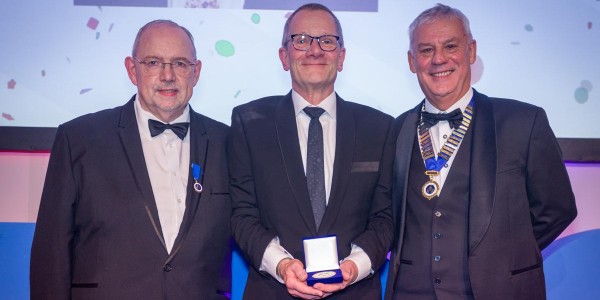August 31, 2023 Opinion piece
The government’s 2023 mandate to NHS England - published in June – has called on all trusts to adopt barcode scanning to track high risk medical devices by next March.
But safety experts such as Professor Sir Terence Stephenson are urging the NHS to go further and use barcode technology to improve safety and efficiency at every stage of the patient pathway.
As Professor Sir Terence explained in a recent interview with Laura Donnelly, health editor at the Daily Telegraph, this follows warnings that surgeons operate on the wrong part of the body three times a week and leave a foreign object in a patient’s body twice a week.
Professor Sir Terence Stephenson
Professor Sir Terence was appointed president of GS1 UK in November 2022, succeeding The Right Honourable Philip Hunt, Baron Hunt of Kings Heath.

Professor Sir Terence, president of GS1 UK
Knighted in 2018 for services to healthcare and children's health services, he has dedicated much of his career to improving patient safety.
He has previously served as Chair of the UK General Medical Council, Chair of the UK Academy of Medical Royal Colleges and as President of the UK Royal College of Paediatrics and Child Health. Sir Terence is currently Nuffield Professor of Child Health at the Great Ormond Street Institute of Child Health, University College London and chair of the Health Research Authority for England.
In 2014, he led the Medicines and Healthcare products Regulatory Agency’s review on medical devices and, in April 2022, was selected as a National Institute of Health Research Senior Investigator.
He was a founding member of the GS1 UK Healthcare Advisory Board and has played a crucial role in helping GS1 UK drive the strategic direction of standards adoption in healthcare to improve patient safety.
The power of barcodes
Around half of trusts already use barcode scanning to some extent, but only a handful have rolled it out to fully cover patients throughout their entire time in hospital, including in the operating theatre.
As Professor Sir Terence explained, scanning patients does not mean treating them “like a tin of beans” - but rather “giving them a unique patient identifier; this actually emphasises their uniqueness.”
These unique identifiers ensure that vital information about a patient and their medical history is visible, easily accessible and properly used.
As demonstrated by the 2020 Scan4Safety evidence report, trusts piloting patient barcode scanning have found that the process significantly reduces admission and discharge times.
Professor Sir Terence said: “We found that the use of barcode scanners can reduce that from two and a half hours to 30 minutes: I was really struck by that. Getting people out quickly is good for patients, but it’s also very good for the NHS, particularly when there are winter pressures.”
To date, roughly 30 per cent of trusts in England have adopted barcode scanning powered by GS1 standards. In some, the use of Radio Frequency Identification (RFID) chips has been piloted, allowing the location and details of equipment to be automatically updated without having to be scanned. For some hospitals, Papworth Hospital in Cambridge, this has saved thousands of staff hours that would have otherwise been wasted tracking down vital equipment.
To find out more, read the full Daily Telegraph article here.
For more articles and information from journalist Laura Donnelly visit The Telegraph website.




